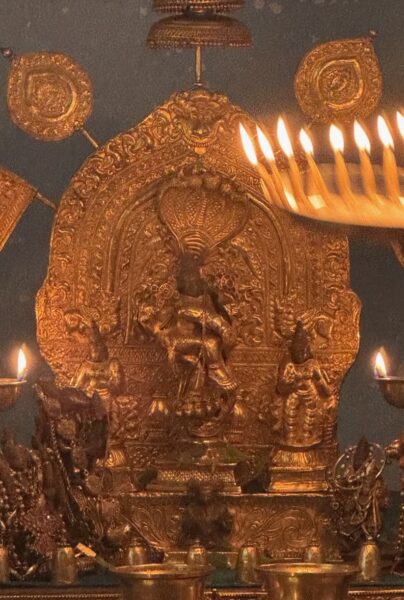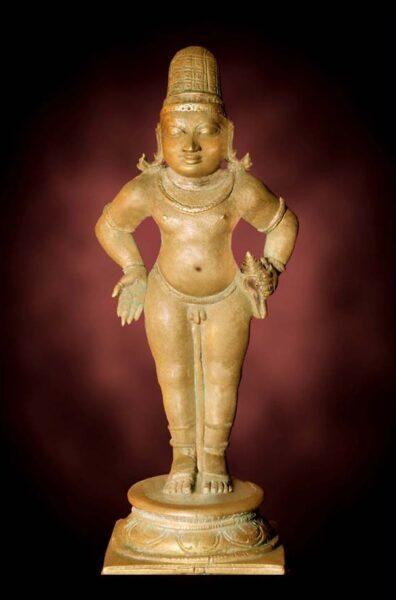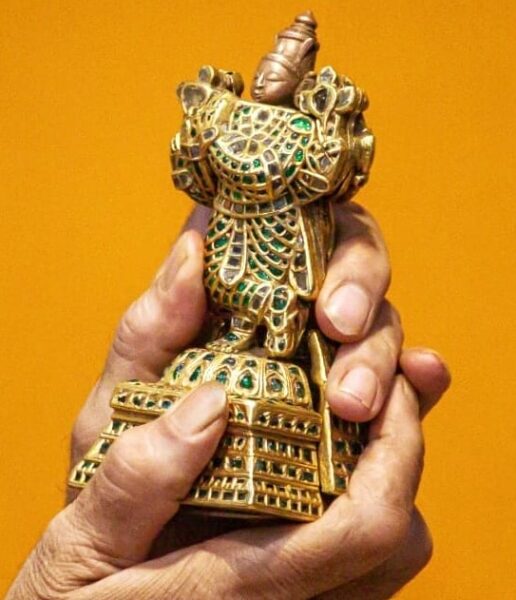हरि सर्वोत्तम । वायु जीवोत्तम | श्री गुरुभ्यो नमः
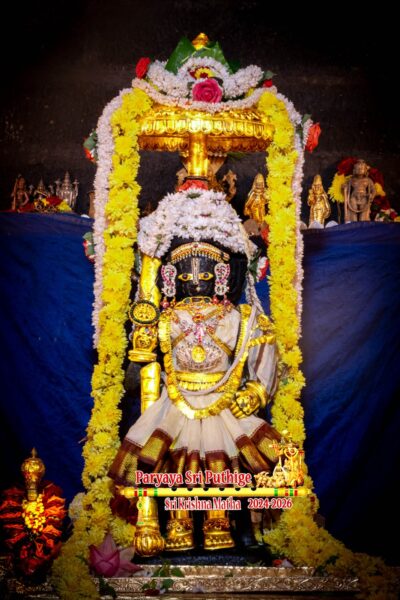
कृष्णं वंदे मंथ-पाश-धरं दिव्यार्भकाकृतिं ।
शिखाबंध-त्रयोपेतं भैष्मी-मध्व-करार्चितं ॥
This beautiful shloka describes the famous icon of Lord Krishna in Udupi:
- We bow to Krishna (कृष्णं वंदे) holding a churning rod in one hand and rope in the other (मंथ-पाश-धरं),
- in the divine form of a little boy (दिव्य-अर्भक-आकृतिं),
- with three knotted tufts of hair (शिखा-बंध-त्रयोपेतं),
- worshipped by the hands of Rugmini (daughter of Bhishmaka, King of Vidarbha) and Acharya Madhva (भैष्मी-मध्व-करार्चितं).
We all know who Krishna is. But what about Madhvacharya – who is he?
And how did the Krishna idol come to him? Where did the idol come from?
What is Lord holding in His hands? And why?
And how was it worshiped by Rugmini? Is the idol really that old?
And how did the idol get to Udupi and make it famous? And why is Udupi famous for delicious food?
These and many other questions come to mind when we hear about the naughty little Krishna of Udupi!
So on this auspicious day of Krishna Janmaashthami, let’s untie some of these knots, unravel and follow the threads to see where they take us!
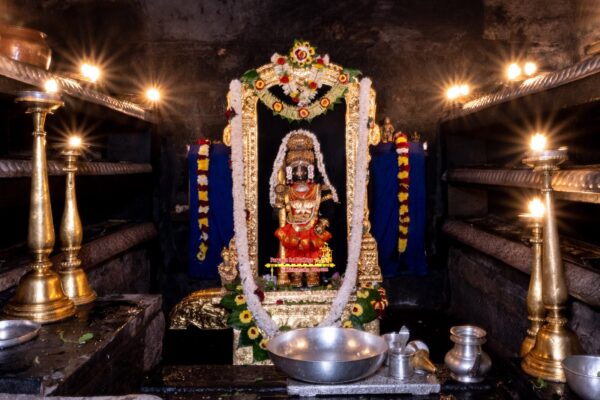
How did this idol come to be? Who made it and why?
Mother Devaki never got to see Krishna as a child since He was whisked away by Vasudeva as soon as He was born (descended or took अवतार actually). She would hear of His glories from others and especially His बाल लीला (miracles and wondrous antics as a child) and wonder how it would have been witness them.
So, many years later, once Devaki and Vasudeva were freed from jail and eventually resided in Dwaraka with Krishna, she asked the Lord to show His form as a child – so she could enjoy what Mother Yashoda experienced! Lord being an obedient slave to His dedicated devotees, and especially to make His own mother Mother happy, took the form of a little boy and enacted various childhood episodes for her, like breaking pots and eating curds/butter etc.
At this time, Devi Rugmini wandered into the room and was captivated upon seeing all this! After all, who wouldn’t be mesmerized at seeing the Lord’s बाल लीला – we who just hear about it are awestruck – just imagine experiencing it live! What’s more, for any grown wife to see her husband play around as a cute child is itself unique, let alone Little Krishna!
So after seeing the Lord’s performance for His mother, Rugmini begged Him to stay in the form of a child! Since that would not be practical (He had so much more to do in His 8th अवतार!), she eventually settled for an idol of the Lord in that form.
So Krishna had Vishwakarma, the divine architect, fashion an idol for her – and that is the form we see in Udupi!
Rugmini, i.e. Lakshmi Devi herself, did अर्चना to this idol everyday and eventually when Dwaraka sank into the sea at the end of Dwaapara Yuga, so did the idol.
So Udupi is uniquely famous for the idol that Krishna modeled for and commissioned Himself!
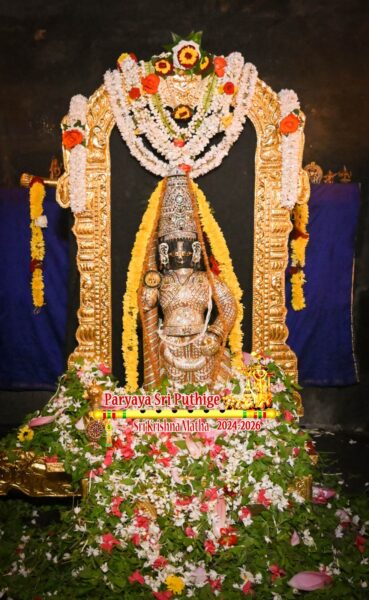
What is Lord holding in His hands? And why?
Lord Baala Krishna is holding a butter churning rod (मंथ) and rope (पाश) in His hands. As part of showing his बाल लीला (childhood antics), the Lord shows Devaki how he stole these from Mother Yashoda and teased her. Purandara Daasa’s song कडगोलु तारेन्न चिन्नवे depicts this lovely incident.
However, there is more to this form than simply capturing a divine childhood memory. In each form, the Lord shows us मुद्रा-s with a message, e.g. अभय to remove fear, वरद to give boons, चक्र to protect us etc.
In the अवतार of कूर्म the Tortoise, the Lord helped churn the Milky Ocean (क्षीर सागर) to help the Devata-s get अमृता, the nectar of immortality, and vanquish the Asura-s.
In His Baala Krishna form, the Lord in Udupi is blessing devotees by helping us churn the ocean of worldly life (संसार सागर) with His churning rod (मंथ) and rope (पाश) to extract the butter of happiness (सुख नवनीत) for us to enjoy.
The churning rod is motivating us to do साधना or spiritual practice to investigate, learn, and put in devoted effort to achieve our potential. The rope is binding us to the discipline and restraint that is essential to this effort.
The goal of the साधना is the butter of enlightenment and happiness that Lord gives us from the churning rod, while the rope ties us in devotion to the Lord.

Who brought the idol to Udupi?
After completing the mission of His अवतार – reducing the earth of its burden by killing Kamsa and others, re-establishing dharma and protecting Pandavas and other good people – Yaadava Krishna exited the world at the end of Kurukshetra war.
Dwaapara yuga ended and even though Duryodhana and many other wicked tyrants had been vanquished, the evil Kali had already taken his hold on society. The powerful knowledge of mantra-s, astra-s and shaastra-s were already being misused and rules of battle violated. Religion became merely ritualistic with animal sacrifices and exploitation of the poor and vulnerable as well. There was a clear and present danger of the transition to overwhelming evil with the percentage of good people diminishing in कलियुग and desperately needing the Lord’s help.
In preparation, Sage Veda Vyaasa, the Lord Himself in the form of Vaashishtha Krishna Dwaipaayana had already compiled knowledge into 4 Vedas, associated Upanishads and 18 PuraaNas. In addition, He had also chronicled the stories of both the Krishna-s in Bhaagavata Purana and Mahabharata, and then retired to Upper Badari, continuing to teach worthy disciples there.
Meanwhile, in the सन्धि काल (interim period) before Kali Yuga began, Lord again descended as Buddha. His mission was to do a “reset”, i.e. zero out this powerful and true knowledge so it does not fall into bad hands, but also to guide good people back on to a path of peace.
Many centuries passed by with the rise of wicked kings, wars and conquests galore. Of course, सनातन धर्म, the eternal and righteous way of life, continued with a faithful following in Ashram-s with Guru-s teaching loyal dedicated students. However, the large masses were still confused due to lack of direction and clear foundations – many dark paths such atheism, nihilism, hedonism were being followed since they promoted the short-term allure of instant gratification.
In the 8th Century AD, Acharya Shankara appeared – the अवतार (descension)of Shiva. His was an instrumental mission to bring people back to acknowledge Veda-s and do आरधना (meditate on and offer prayers) to all the Hindu deities. After these roots took hold, Acharya Ramanuja, the अवतार of Shesha, appeared in the 12th Century AD and re-established particular knowledge of Vishnu as the Supreme Lord Almighty.
And then in 1238 AD Lord Vaayu, i.e. मुख्यप्राण descended to the earth. Having served Lord Krishna as Bheema in Dwaapara, and Lord Raama as Hanumanta, he now appeared as Acharya Madhva in Kali Yuga to continue Lord Veda Vyaasa’s (and Lord Krishna’s) mission of helping good souls (परित्राणाय साधूनां) and restoring correct knowledge (धर्म संस्थापन).
Amongst many other things in his mission, Acharya brought the idol of Krishna to Udupi and installed it there in Krishna Matha, where daily prayers have been offered ever since without any interruption.
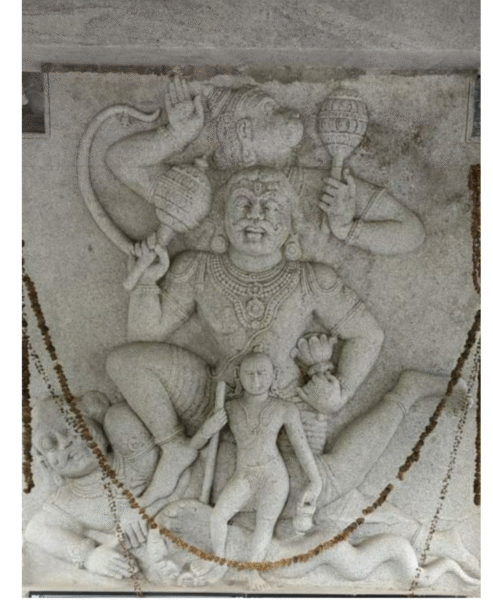
So what else did Acharya Madhva do?
Acharya Madhva’s life history is recorded in detail in “Madhva Vijaya”. It is a unique authentic biography by his disciple Narayana Panditacharya since it was written in Acharya’s lifetime with his blessing and based on authentic and verified content. It goes into various thrilling episodes including how Acharya was born, his childhood and miracles thereof, as well as amazing physical and mental feats – many a parallel to Krishna’s own लीला-s.
Here is a glimpse into the teachings that Acharya Madhva revived:
- There is one Almighty Lord
- All souls are His dependent followers and uniquely individual
- Both are different from inanimate matter
- The world is real and each experience thereof – including dreams!
- Souls act on their unique intrinsic nature influenced by the body, senses and environment in each birth – which are earned based on past karma
- While individuals are not independent, they do have the ability and responsibility to choose between right/wrong – and accumulate future karma
- Liberation for a soul from worldly cycle of life and death allows it to experience its own innate bliss fully and permanently
- Bhakti, which is experiential knowledge (realization) combined with pure love and affection for the Almighty, is the only means to liberation
- All words fundamentally describe only the Lord – and only secondarily have worldly meanings
Here are a few of Acharya’s many accomplishments:
- Starting Bhakti movement and especially being the founder of Daasara Padas and Bhajans
- Perfect oration and victory in every single debate with senior scholars
- Initiating अन्न दान, i.e. feeding all devotees who visited temples
- Reforming यज्ञ-s (sacrifices) to use rice flour (पिष्ट पशु) instead of real animals
- Writing commentaries (भाष्य-s) on consistent interpretation of Brahma Sootra-s (four of them), all 10 major Upanishads, Bhagavad Gita (2) and Mahabharata
- … and many more …
Here are some of Acharya’s many miracles as Vaayu’s third अवतार of a Sanyaasi Braahmana, reminiscent of his previous अवतार-s of Hanuman (Brahmachari Kapi), Bheema (Grihastha Kshatriya) as well as Lord Krishna:
- Amazing physical feats like crushing serpents, lifting boulders, jumping 100s of meters
- Feeding hundreds of people with a small quantity of food
- Consuming vast amounts of food
- Fasting and मौन व्रत (vow of silence) for 48 days while bathing in the cold Ganga at Badari
- Leaping from mountain to mountain to reach Upper Badari to meet Lord Veda Vyasa
- Expert in music and sprouting seeds into plants by his singing
- Simultaneously dictating compositions to multiple students to scribe in parallel
- Invoking the continuous flow of Ganga for his mother and at the Udupi temple
- Reciting scriptures perfectly as a child and attending Gurukula just to set an example
- Transforming tamarind seeds to gold as a child to repay his father’s debt
- … and many more …
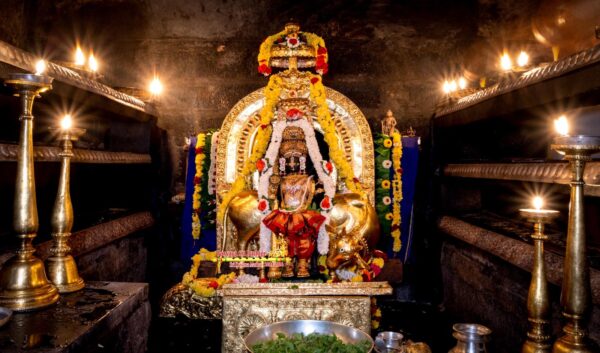
How did the idol get to Udupi from Dwaraka?
Acharya Madhva went to Badari, propagating knowledge along the way and taking on worthy students. Reaching Upper Badari, he offered his गीताभाष्य to Lord Veda Vyasa and received the mission of using the Brahmasutras to give a consistent interpretation of Vedaanta.
Back in Udupi, one day as he was sitting on the seashore at Malpe, a beautiful spot few kilometers from Udupi, a ship got caught up in a sudden storm and was at risk of sinking. Acharya stood up and waved his कावि वस्त्र (saffron cloth) and showed अभय मुद्रा (symbol of fearlessness). The storm receded and the captain of the ship offered everything to Acharya in gratitude. But what does a Sanyaasi need, let alone Acharya Madhva himself?!
Acharya only accepted a block of गोपिचन्दन that was used as ballast to balance the ship. He carried the unusually heavy block with ease and chanted the famous Dvaadasha Stotra वन्दे वन्द्यम्… as he walked back to Udupi towards the Anantheswara temple. When the block was immersed in the पुष्करिणी (holy pond), Lord Krishna appeared from within in the form of a little boy holding a churning rod and rope!
Acharya then had the idol installed in the adjacent location of Udupi Krishna Matha.
Since then the little boy मन्थपाशधर Krishna is giving दर्शन to millions of souls irrespective of caste and creed and inspires them on the right path.
There are so many other enthralling stories and episodes about Udupi Krishna but this is how His idol got to Udupi from Dwaraka.
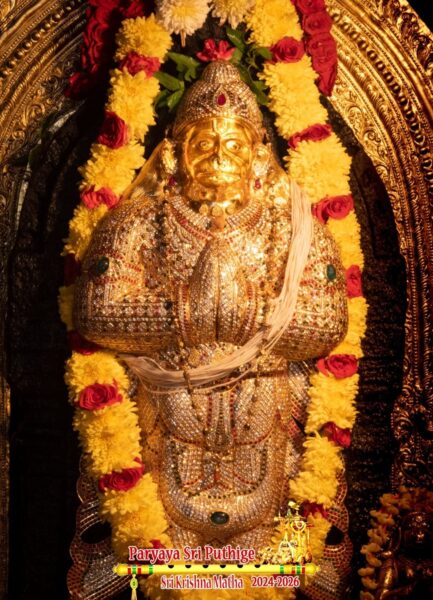
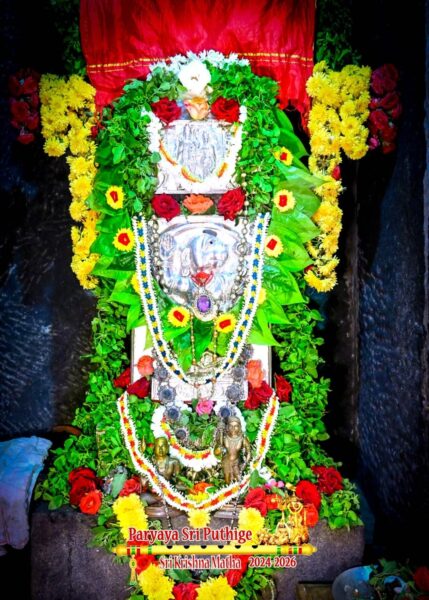
Okay, but why is Udupi so famous for food!?
Lord in Tirumala is called कांचन ब्रह्मन् – the Lord Almighty of Wealth – where He is accepting gold, valuables and cold cash from devotees and blessing them for genuine offerings.
Lord in Pandarpur is called नाद ब्रह्मन् – all devotees have to do to please Him is sing His glories and they are blessed!
Lord in Udupi is called अन्न ब्रह्मन् – He not only guides them forward on their life journey, He feeds every devotee who comes to see Him with delicious food!
Acharya Madhva knew that humans need food and energy to be able to even think about their spiritual path let alone progress on it. So he made sure that every devotee who visits the Lord is offered तीर्थ & प्रसाद – not just a small ritualistic morsel but a sumptuous and delicious meal.
No one knows how this much food gets prepared and served daily – thousands, tens of thousands and even lakhs on big events. Yet it is not surprising – providing food is just natural to Acharya Madhva who is अवतार of मुख्यप्राण, the very life force of Vaayu in each body.
It is interesting to note in his previous अवतार as Bheema during Mahabharata, he showed what a great cook he was during the year of अज्ञात वास (incognito exile) as Chef Vallabha (Vallala/Ballala) for King Viraata. And before that during their 12-year वन वास (forest exile), his consort Draupadi received the अक्षय पात्र (inexhaustible vessel) from Lord Krishna that fed thousands of visitors.
So it is no surprise that the deity in charge of food in Udupi is Lord’s prime servant Vaayu in his Hanumanta form – in not just one, but two idols: One in front of the sanctum where Lord’s नैवेद्य (offering) is done and the other next to the भोजनशाला (dining room) where thousands are fed!
A specialty of the cooking is the delicious Udupi सारु or रसम्. As the word’s meaning indicates, it is the essence of all the kinds of tastes and includes spices and herbs that are excellent for health and digestion. Udupi Krishna Matha chefs’ repertoire is unmatched in its creative and vast variety of savories, snacks and sweets – all completely सात्विक् and made fresh every day for the Lord’s नैवेद्य, especially since He is in the form of a little boy who is always hungry and easily bored with the same food!
Soon this cuisine and the attention to epicure were adopted by every local cook in the region, universally appealing to gourmet and common man alike.
So nowadays everyone in the world uses the marketing tag-line “Udupi” even if they serve other dishes because “Udupi” is synonymous with lip-smacking and finger-licking tasty food!
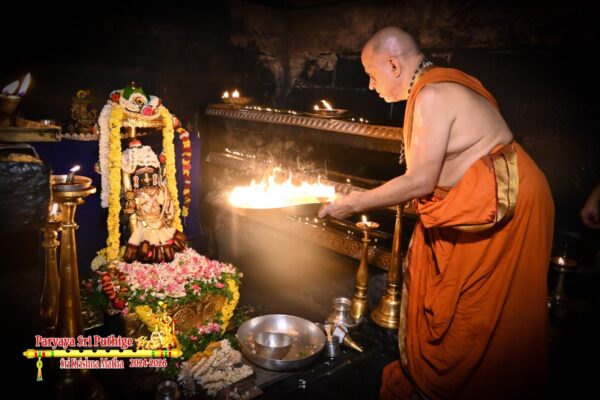
Let us all go to Udupi to take delight in the divine दर्शन of Lord Krishna in Udupi – and enjoy the tasty प्रसाद of अन्न ब्रह्म too!

Hare Krishna!! कृष्णं वन्दे जगद्गुरुम्!
/Raghunath Rao/ “Do your Best … and leave the Rest … “
(All mistakes mine – all credit to Gurus and Acharyas )
|| sarvaṁ śrī kṛṣṇārpanamastu ||

